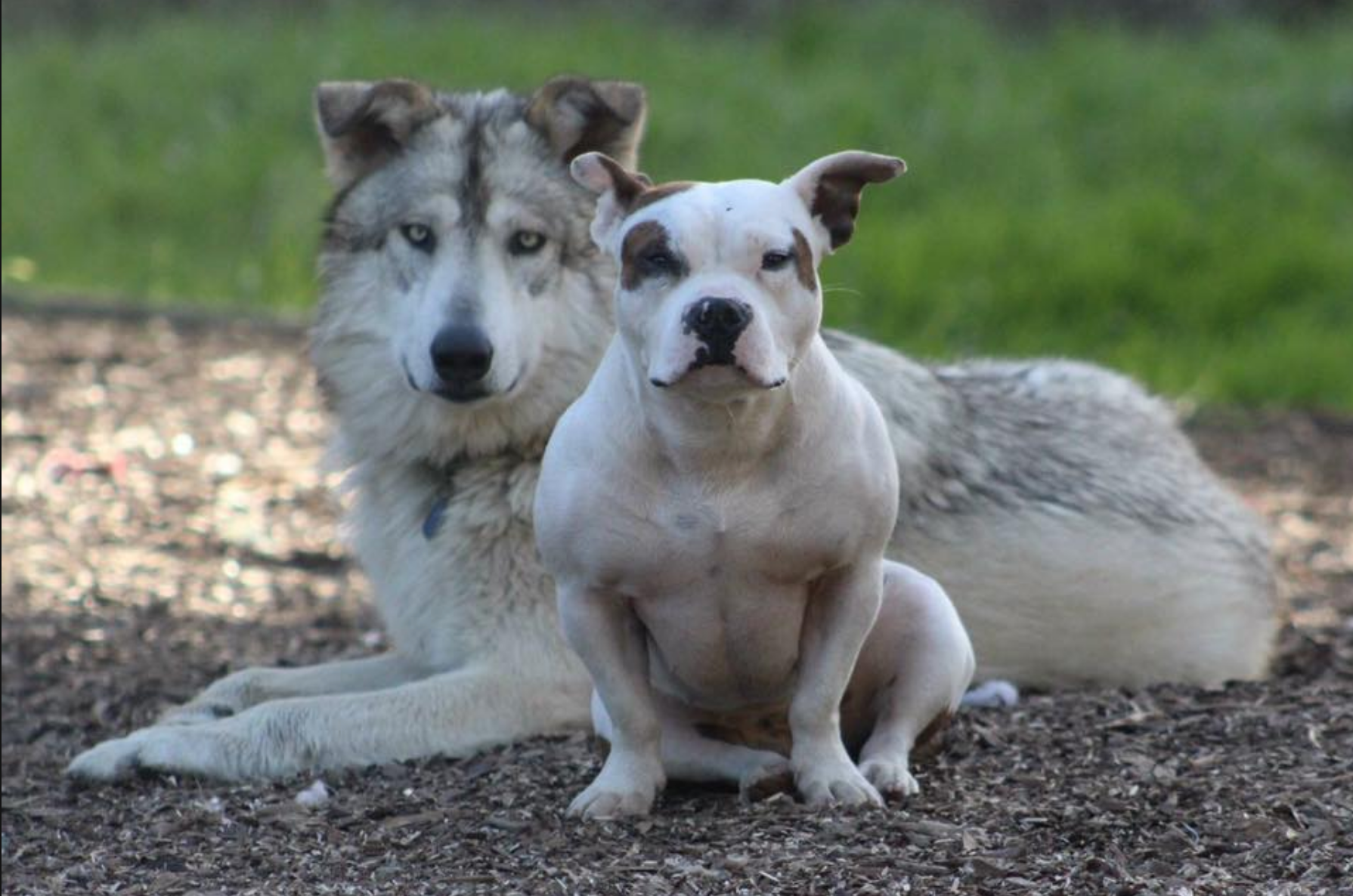What's at Risk
“What I would do with my dog doesn’t mean it’s the best or correct choice for you and your dog.”
Now, it's time to consider..... Based on the medical issues your dogs have had in the past, you may have a pretty clear idea of the diseases you most want to avoid with your current or future dogs. And, your decisions about if, when, and how to neuter/sterilize your dog can influence such outcomes. Some diseases are known to be prevented by neutering, and others are known to be associated with neutering. It is up to you to "pick your poison."
Here's an example. If you've lost a dog to breast cancer, you may want to do anything and everything possible to prevent your current girl from ever developing this disease. The best insurance policy for this is having her spayed before she ever comes into heat.
If your last Golden Retriever succumbed to lymphosarcoma, a life-ending form of cancer, you will likely want to postpone neutering your next Golden Retriever until at least one year of age, particularly if you have a male (see breed-specific research section).
In addition to reading through the research presented on this website, take a look at the information presented below. It may just influence the decisions you make.
This is a condition in which pus (pyo) develops within the uterus (metra). Bacterial infection accompanies most cases of pyometra. This disease occurs most commonly within the 4 to 8 week time period following estrus (being in heat). Pyometra occurs in 2-15% of intact female dogs (depending on which study you read) and the risk increases with age.
Pyometra typically makes for a very sick dog, and the sooner she is treated the better. This disease becomes life threatening when treatment is postponed. The most effective treatment for pyometra is surgery in which the pus-filled uterus is removed. In milder cases, medical rather than surgical treatment can be successful, but this option is typically reserved for valuable breeding dogs.
Pyometra requires two ingredients: an intact uterus and the presence of ovarian hormones. For this reason, all of the spay surgeries described on this website (see drop down menu under neuter/sterilization options) prevent pyometra from developing. This is contingent on the uterus and/or both ovaries being removed in their entirety. If even a remnant of uterus and ovary are left behind, pyometra can occur.
Testicular Tumors in dogs
Testicular tumors are super common, occurring in 16-27% of unneutered older male dogs. The good news is that approximately 90% of these tumors are benign. The incidence of tumors within cryptorchid or retained testicles (those that have not descended down into the scrotum) is considerably higher and with an increased likelihood of malignancy. In most cases of testicular tumors, castration is completely curative. And, of course, neutering prevents testicular tumors from ever arising.
Prostate Gland Disease in dogs
A few different types of prostate gland disease occur in dogs, most of which are influenced by the presence of testosterone. Given that testosterone is produced within the testicles, castration prevents most types of prostate gland disease from occurring. The exception to this rule of thumb is prostate gland cancer which occurs more commonly in neutered male dogs. Neutering is commonly used as part of the treatment for various types of prostate gland disease.
Prostate gland hyperplasia (BPH): This is the most common version of prostate gland disease in unneutered male dogs. Just as happens in men, under the influence of testosterone, the canine prostate gland gradually enlarges with age. BPH can interfere with normal urination. Other symptoms may include difficulty passing stool and hind limb abnormalities. BPH is a very treatable disease. Symptoms resolve quickly following castration. Medical therapy is also an option.
Bacterial prostatitis: This is a bacterial infection within the prostate gland that often occurs on the heels of BPH. In addition to the usual BPH symptoms, abnormalities associated with infection may include lethargy, loss of appetite, and hind end discomfort. Bacterial prostatitis usually resolves successfully in response to antibiotics and castration. Depending on how sick the dog is, supportive care with intravenous fluids may be warranted.
Prostate gland cysts: Cysts can arise within or adjacent to the prostate gland. Symptoms are typically dictated by their size and location. Castration alone may be effective for treating cysts that within the prostate gland. Those adjacent to the gland may require surgical removal.
Prostate gland cancer: This disease occurs more frequently in castrated dogs. Yet, it's not uncommon to hear (even from veterinarians) that neutering prevents prostate gland cancer. This is simply not the case. Invariably, cancers that form within the prostate gland are malignant, and symptoms can include bloody urine, difficulty passing urine and feces, and hind end stiffness, weakness, and pain. There are not curative treatments, however radiation therapy and/or medications may provide relief of symptoms for a period of time.
Mammary Tumors in dogs
Mammary gland tumors (breast tumors) occur in middle aged and older female dogs. These tumors vary from completely benign to malignant and life ending. Authors of the most recent study on the incidence of mammary tumors concluded that only a weak correlation exists in their relationship to neutering status and age at the time of neutering. However, ask most veterinarians, and they will tell you that early spaying (with removal of both ovaries) is the best way to prevent mammary tumors.
A rather ancient study (published in 1969) concluded that, overall, neutered female dogs had 12% of the mammary cancer risk as compared to intact females. Dogs spayed before their first heat cycle (estrous cycle) had only 0.5% of the mammary cancer risk compared to intact females. Those spayed between their first and second heat cycles had an 8% risk compared to intact females, and dogs spayed after 2 or more heat cycles had a 26% risk compared to their intact counterparts. The risk of mammary tumors in dogs spayed after 2.5 years of age was identical to the intact female population. The take home message here is that spaying before 2.5 years of age has a sparing effect in terms of the development mammary tumors, and the earlier the time of spay, the greater this effect.
urinary incontinence in dogs
Involuntary urine leakage, aka urinary incontinence, is a common issue, particularly in middle-aged and older female dogs. The volume of urine leakage varies from dog to dog. Fortunately, most dogs respond to treatment consisting of oral medication and/or injections around the urethra (the tube that leads from the bladder to the outside world). Dogs with urinary incontinence who are refractory to therapy typically end up wearing doggie diapers or banished from being in the house.
In 2012 a survey was conducted to evaluate seven previous research studies that examined the impact of neutering and age at the time of neutering on the risk of development of urinary incontinence in female dogs. The authors of the survey concluded that these studies demonstrated weak evidence that neutering, particularly before the age of three months, increases the risk of urinary incontinence. This conclusion doesn't jive with the experience of many veterinarians who believe that there is strong correlation between spaying and urinary incontinence, based on having treated a whole lot of spayed incontinent dogs and nary a one who was intact.
Canine cognitive disorder (doggie dementia) is relatively common. Much like people with Alzheimer's disease or dementia, dogs with cognitive impairment may demonstrate confusion, alteration of sleep patterns, and a decrease in social interactions. Cognitive disorders in older dogs are thought to result from oxidative damage (damage from oxygen-free radicals) within brain cells. Such changes can begin as early as 7 to 8 years of age. Medical therapy can provide benefit for some dogs with canine cognitive disorder. Rather than curing this disease, the goal of treatment is to slow the progression. A 2001 study documented that canine cognitive disorder progresses more rapidly in neutered dogs compared to those who are intact.
Hypothyroidism in Dogs
Hypothyroidism is a hormonal imbalance caused by decreased production of thyroid hormone. Hypothyroidism is commonly diagnosed in dogs. Because thyroid hormone controls the basal metabolic rate, dogs who are hypothyroid typically become sluggish and experience weight gain. Other common symptoms include hair loss, skin abnormalities, and heat seeking behavior. Hypothyroidism is readily treated with thyroid hormone replacement therapy which is given orally on a daily basis. Lifelong treatment is necessary.
A study evaluating 3,206 dogs with hypothyroidism (decreased production of thyroid hormone) documented that neutering is associated with higher incidence of this disease, particularly in females. Leaving a dog intact may lessen the likelihood of this disease.
Autoimmune disorders (immune mediated diseases) in dogs
Several autoimmune diseases can affect dogs. They are caused by the immune system being triggered to attack the body's own tissues such as red blood cells, skin, joints, the lining of the gastrointestinal tract, and glands that produce hormones. In many cases immune mediated diseases are treatable, but may require long term if not life long therapy. In some cases, autoimmune diseases are life threatening. A 2016 study demonstrated that neutering predisposes dogs to most of the 11 autoimmune diseases surveyed. Sex hormones appear to play a critical role in immune function and tissue self-recognition.
Ovarian Cancer in dogs
Because ovarian cancer is such a prevalent and horrific disease in people, it makes sense that it comes up as a worry for our dogs. What's important to know is that ovarian tumors in dogs are rare. When they do arise, they can be malignant or benign. Symptoms vary, but may be related to abnormal hormone production. The normal heat cycle may be disrupted. The treatment for ovarian cancer is removal of the ovaries. Spay surgery that involves removal of the ovaries prevents this disease.
canine Obesity
The American Animal Hospital Association reports that 40-50% of our pet dogs are overweight and 25% are considered to be obese. Not only does carrying around extra weight tend to shorten a dog's lifespan, obesity has been associated with causing or exacerbating a variety of maladies such as arthritis, diabetes, heart disease, and respiratory tract diseases. For some dogs, obesity may be caused by a hormonal imbalance, particularly hypothyroidism. In the majority of cases, dogs become overweight because of excessive caloric intake in relationship to the number of calories being expended. Does neutering cause dogs to become obese? Technically, no. What neutering does do however is decrease a dog's metabolic rate. Therefore, fewer calories are required to maintain status quo. If the feeding regimen is not adjusted for this, obesity is likely to occur.









